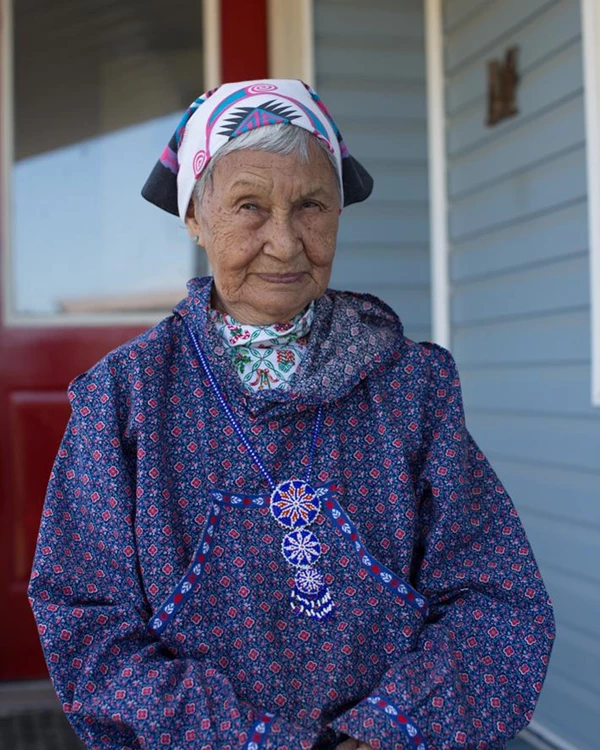Person
Mary Olympic

Photo courtesy Corey Arnold 7/30/2013.
Mary Olympic was born and raised at a reindeer camp at Kukaklek Lake, Alaska. The Kukaklek Lake area Mary called home are the same lands now protected by Katmai National Park and Preserve. Her life at Katmai represents a subsistence lifestyle in Alaska that has endured for thousands of years and continues today. Her recollections illuminate the practice of reindeer herding from a time when very few other first-hand accounts exist. Today, her personal accounts are an important contribution to the collective memory of the land.
In 1931, Mary was born the seventh child of Alexi and Marsha Gregory. Mary’s family followed the seasonal subsistence traditions of Southwest Alaska. During the summer and fall, her family spent time at their fish camps where her mother would split, dry, and smoke salmon and hunt ground squirrels while her father tended to the reindeer and hunted bear and moose. In winter, Mary’s father also trapped furbearers including otter, mink, and fox. He often hired additional help to look after the reindeer herd while he was trapping, but it wasn’t long before Mary was entrusted with that responsibility.
At the age of 13, Mary became a full-time herder for her father along with Elia Eknaty, an orphan taken in by the Gregory family. Together, she and Elia took the reindeer herd out to graze in the evening, leaving home around four and not returning until ten or eleven at night. Mary would watch over the herd, preventing them from mixing with the wild caribou and protecting them from wolves. She recalled that when the “[wolves] start howling, we start shooting in the air with the .22. Build a big fire there, light a Christmas tree....” From an early age, Mary learned hard work and responsibility, but this time in her life wasn’t without its fond memories either. Mary spent time lassoing reindeer calves for fun, once accidently taking on an adult too big to handle. Another time, she recalled how the reindeer loved to eat mushrooms and she and her friend became sick after pretending to be reindeer and eating too many themselves.
Together, Mary and her family managed one of the last reindeer herds in the region. They eventually stopped reindeer herding after 1947. However, the family’s strong connections to the land allowed for Mary’s father to file an allotment application for land adjacent to Kukaklek Lake near their Winter Camp in 1960, in accordance with the Alaska Native Allotment Act of 1906. Mary eventually inherited her father’s 160-acre allotment after a long legal battle.
Mary married John Olympic at the age of 16 in 1947 and they had several children together. John spent most of his time commercial fishing while Mary was the primary caretaker of the family. Using the skills she had learned growing up, Mary managed her own trap line and fish camp like her parents. She also took a job at the school in Igiugig to help support her family.
Later in life, Mary became a respected Aleut/Yup’ik elder, passing on her knowledge to her family and community. Mary is considered a matriarch of Igiugig. She was instrumental in land selection for the Igiugig Native Corporation and a leader in the Igiugig Village Council. She ensured that governance systems were operated based on Indigenous values. Her granddaughter, Christina Salmon, remembers her strong personality and how “she ruled with an iron fist... she listened really well… she knew right from wrong, and that was most important for her.” Though Mary was an integral part of the Igiugig community, she referred to Kukaklek Lake as nunaka, “my homeland.”
In 1995 and 2002, Mary was interviewed for Project Jukebox, a community history endeavor conducted by University of Alaska-Fairbanks with the National Park Service. Her stories are a record of Alaska Native subsistence lifestyle, local place names and traditional knowledge integral to the families of Igiugig. Her words, preserved through the oral history tradition, continue to impart knowledge of the rich cultural history of Katmai Preserve lands. Mary is remembered as a leader and cultural bearer. Through both the enduring record of her life and in her roles in governance, Mary has helped to ensure the success of current and future generations.
You can listen to Mary in her own words on Project Jukebox.
